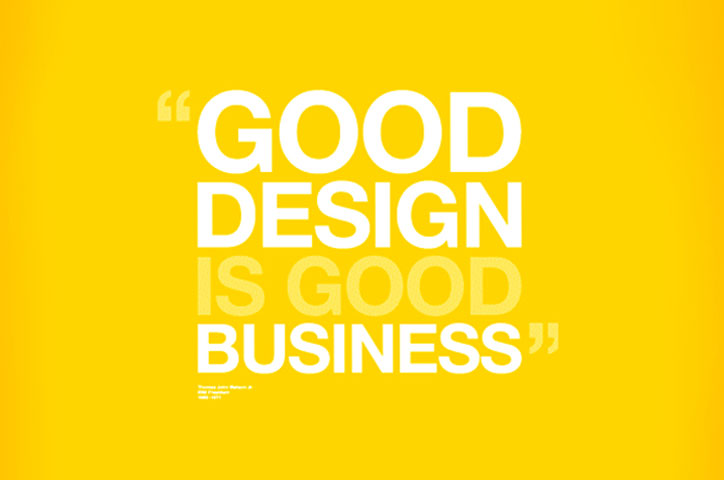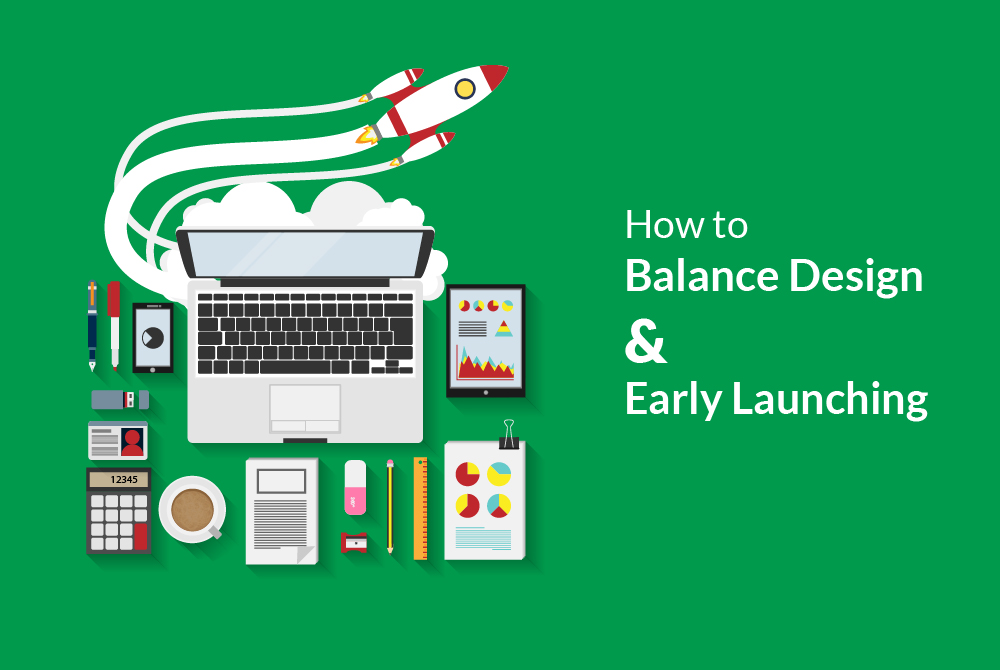How to Launch Early without Affecting the Design
Haven’t we wondered how quick the products are launched these days? Well, all the credit goes to the advancements in technology.
But, now that the speed of launching a product has increased, another question pops up.
“Will the early launch affect the design of the product?”
The answer is “yes if necessary changes are not made.”
Unfortunately, balancing the design and early launch is complex and at the same time essential.
However, most of the organizations have started exploiting management techniques to successfully design new products and launch them early.
But, wait! Doesn’t haste make waste? Then why do the companies need an early launch? Can’t they work on their product slowly to bring out the perfect model?
Yes, haste does make waste but the early launch has its own importance and need.
Importance of Early Launch
“The Clock never stops, never stops, never waits. We’re growing old. It’s getting late”
-Ben Folds
We need to agree on the fact that in this competitive and fast-moving world, everyone needs to run at the pace of light to succeed.
The businesses that fail to bring out new products as early as possible often fall out of the race.
As new products keep entering the market and their life cycles keep shrinking, the companies have started reducing their development cycles by up to 50%.
Therefore, the products these days must be quickly delivered in the market so that it does not become stale.
The organizations need to define business objectives before planning to launch the products early.
Based on the objectives, they need to know the aspect of the cycle that needs improvement.
But people often wonder about these objectives. Well, basically the early launch could be due to the following six objectives.
All-out speed
This objective is followed in industries where the products become outdated very quickly. One of the best examples of such an industry is the smartphone market.
Minimizing the Schedule Variation
In this case, the companies might target to hit a time window to launch the product.
For instance, the company might try to launch the product on a seasonal or a holiday time.
As a result, such a launch requires a very quick pace, as missing the deadline would make the launch worthless.
Agility Enhancement
There are several acceleration techniques to improve the agility of the design phase.
These techniques allow the developers to make the required changes without affecting the decided launch date of the product.
Productivity Enhancement
The productivity is indirectly associated with the early launch and is often an essential element in the radar of the management.
When the productivity of employees increases, the early launch automatically proceeds on the right path.
Shun Rework
Some of the delays are often due to the mistakes and reworks.
Therefore, some managers concentrate on the mistakes to meet the required early launch date. This saves both time and resource utilization.
Sticking to Schedule
Some organizations fail to establish a proper schedule. As a result, the process works randomly without any predefined path.
In such cases, the objective of the management is to follow the planned schedule to meet the early launch date.
So, early launch does have its own importance. Then, why do we need to focus on the design in such a short time?
The consumers must be aware that they would have to compromise with something for an early launch.
Then, why can’t the organizations focus on the early launch and give minimal importance to design?
Importance of Good Design

“Design can be art. Design can be aesthetics. Design is so simple, that’s why it is so complicated.
~ Paul Rand
Design plays a very vital role in this communistic society. The globalization has increased the need for a good captivating design.
It is evident that the needs of the consumers are still basic, while their desires have taken a new path.
Since there are a lot of similar products in the market we need to ensure a unique and attractive design while launching the product really early.
Only a good product design can communicate the meaning to the consumer.
Okay! So, an early launch is important and the design is also important. Then, how to balance the both?
How to Balance Design and Launching Early

Image Source
When planning to launch a product early without affecting the design, we need to participate in a lot of research, planning and measuring.
To ensure a lasting impression we have to understand the market, identify our goals and develop and test minimum viable product (MVP).
Understand the Market
We often get tempted to start working on a product that requires early launch.
Guess what? This temptation could result in a huge disaster. Therefore, before starting with product design, we need to carefully understand the market.
A company that plans to launch a product early must ensure that it shares its vision with the market and intended audience.
Furthermore, the company needs to understand the customer landscape. This analysis will help the organization understand whether the product fits the market or not.
The smart thing to do in such cases would be to analyze the existing market research conducted by others.
If we start a market research on our own, the aim of early launch would never be achieved.
Furthermore, during the process of understanding the market, the organization should also perform a quick analysis of the competitors.
The primary reason is that even the smallest player can act as a huge competitor in some of the industries.
Therefore, we should keep an open mind regarding the competition.
The reason is that we might find potential partners who could help in early launch and design.
Apart from these aspects, the companies need to focus on other aspects before starting with development.
Goal Identification

Image Source
Be it life or work, identifying the goal is very important.
Identifying the goal of the product is necessary to maintain the balance between design and early launch.
Success cannot be achieved unless we define what we want to achieve. It is evident that the goals of a product launch will be smaller than overall business goals.
Generally, the most common goals of a product launch are to grow the customer base, market share and create awareness.
Moreover, these goals should align with the plan of the company.
Develop and Test MVP
When we are set to launch our product early, it is evident that our first product will not be our final one.
We will have to understand that the first product will be the most basic one which offers the most basic features.
However, based on the success of the first viable product, we will have to work on the additional features for the next launch.
To build a successful MVP, we will have to work a lot on the testing and re-engineering part.
One of the best ways to do so is by developing a test version of the MVP and getting it tested by a pilot group for their feedback.
The feedback obtained should be used as guidance rather than the point of validation.
Once the MVP is ready, we need to ensure that we can implement all the important set of features in the complete product.
In some cases where implementation of all the features is not possible, we need to strip down the essential ones.
Doing so will help the engineers plan their development process. Moreover, it will also help reduce the time on revisions.
Overall, there are approx. 101 points to keep in mind while product development.
As a result, we need to note all these points to ease the process of balancing the design and early launch.
Balancing early launch and design is not a piece of cake. We also need to know the elements that can affect the process of balancing the both.
We need to implement these elements at various stages of the process as and when applicable.
Elements Essential to Maintain the Balance
Now we know how to balance design and early launch. But, what are the elements that we need to focus, is still a confusion for many.
Time Compression Techniques
Time is money and power.
Therefore, we need to calculate and make appropriate use of time so that the everyday decisions are taken effectively.
Hence, it is essential that we prune the project list so that the new products do not have to wait in the queue.
Moreover, to save enough time, it is beneficial to run the processes concurrently.
Also, we need to make sure that we seek for the opportunities where we can combine more than one activity with the available partial information.
Strong and Rapid Decision-Making Team
A team that can make rapid decisions can do anything.
Therefore, a team that is small, dedicated and multifunctional is essential to balance the design and early launch. Moreover, a strong team leader should lead such a team.
A strong team leader is the most important element in projects that require early launch along with good design.
The selected team leader should be able to make quick business and design decisions.
A strong leader is one who possesses the required technical competence which helps in making wise product decisions.
Moreover, such a leader is required to meet the fast-changing innovative needs of the product.
Also, strong leaders are capable of tackling any sort of obstacle through smart workarounds.
One important thing to consider while assigning such a leader to such a project is that he/she should not be assigned to any other project.
The team leader should work full-time only on the project that needs an early launch.
Similarly, the core members of the product designing team should also be assigned full-time without any tasks from other projects.
Smooth Transition
While beginning with a project, we need to ensure that we start with a small pilot project. This project must have all the essential elements needed for initial success.
In some of the cases, it might be difficult for team members to get accustomed to a fast-paced project from a low paced one.
In such cases, it is essential to encourage and support the positive changes in the behavior of the team members.
Furthermore, we should resist the temptation to rush through every project. Get the projects ready, that need early launch.
We need to treat other projects that do not require early launch in a different manner.
Management Techniques
The management techniques should also be streamlined in a different manner whenever there is a need to balance design and early launch.
The teams should be skilled to make all the decisions regarding the design so that the management can focus on the issues related to the scope and resource allocation.
Furthermore, the management can conduct frequent informal reviews so that the progress of the project can be monitored.
Moving forward, the management should manage the market and technical risks in parallel.
They must also keep in mind the fact that the delay can increase the market risks automatically.
Continuous Communication

Image Source
“Effective and continuous communication is the key to ultimate success.”
One of the biggest challenges to maintain the balance between the design and early launch is to revamp the communication methods.
While dealing with products where we need to maintain a balance between the design and early launch, we must establish a communication mechanism that can assist the process of quick decision making.
The development of new product always requires a lot of communication within and beyond the team.
Therefore, a small team will always be the best way to proceed in such scenarios.
Also, physically locating the team members within the talking distance will speed up the communication process.
Moreover, we need to focus on direct communication methods such as face-to-face communication to make the process faster.
Such a method of communication is helpful to transmit partial communications.
On the other hand, the standard methods of communication such as plans and reports consume more time and hence should be avoided as much as possible.
They also delay the decision-making process.
Model Building
To develop products that need to be launched early without disrupting the design, we need to build and test the product relentlessly rather than planning and analysing carefully.
These models assist in identifying the soft design spots and minimizing the market and technical risks.
The major reason for building a model is that it is easy to build and can be built using any material.
For instance, the model of the first mouse that was used for Apple computer was built using plastic butter dish.
Similarly, we can also build a model of the product with anything such as toothbrush, software or even from the parts of the competitor’s product.
The main objective in the case of building models through basic elements is to avid building high-end models that look and functions exactly like the final product.
Doing so will consume a lot of time. Therefore, the best approach is to build several functional models and test the basic concepts over those models.
To understand the look and feel of the final product, we can build a non-functional model.
Such model will help analyze the features that work and the one that does not work.
Proper Product Structure
Instead of focussing on the “ultimate product,” we should focus on the incremental development of the product.
As discussed above, the focus should be on the MVP. The best way to do so would be to note down the key design points.
Furthermore, the design of the product should have lean interfaces and independent modules, similar to the model of the product.
Procedures and Controls
We have often many small companies that have made it huge mark in the market. How is that possible?
It is because, unlike the big companies, the employees at small companies do not have to follow a lot of procedures, reports, checklists and much more.
Therefore, these additional procedures and controls should be minimized and the teams must get the freedom to build models relentlessly.
Joint Product Specification
The product specification is a document that records the features, cost, performance, and development cycle of the final product.
This document establishes a base platform for communication, negotiation and product understanding.
However, the challenge in writing such a document is that it is impossible for one party to draft a good specification document for an early launch.
The reason behind this is that to define the product, several disciplines need to provide their input.
By allowing one function to write the entire specification document, the aim of fast team execution gets compromised.
Limited Product Features
One of the basic misconceptions of people is that adding a feature to the product increases the project complexity proportionally.
However, the fact is that the complexity of the project becomes double with the addition of a single new feature.
Product complexity might look beneficial, but they are more of a trap. The product advancement might be worthy in case of individuals.
But when it comes to development efforts, the complexity multiplies. Therefore, while working on an early launch, we must ensure that product complexity is carefully managed.
One of the solutions is to freeze or limit the advancements in one generation and implement the new advances in the next generation.
Project Overload

Image Source
We all know how the employees work at a corporate.
Sometimes, they have to work on a number of projects that are beyond their handling capacity.
The design phase and development cycle of the projects are big because it remains in someone’s pipeline for a long time.
The reason for so many overloads is that the project planners get a reward for successfully adding a new product to the pipeline.
Therefore, the management must ensure that projects are carefully selected and the priorities are assigned and followed properly.
Hence, a project that requires early launch must be placed on a higher priority. Only then we can balance the launch and design effectively.
Not Everything Is Engineering
If someone says, “I want to develop something.” We immediately suggest the need for an engineer.
That is not the case always. The designing may generally start as a form of engineering but optimization opportunities lie outside engineering.
The time to successfully execute a project is from the time the company learns about the idea till it successfully delivers it to the customers.
Therefore, the organization should identify areas where the process can be optimized and should not solely depend on the engineering aspects.
Hurray!!! We are done with everything.
Wait! There are some very dangerous traps along the process of balancing the two, which can drag us into a huge hole.
We need to know these traps to avoid them.
Traps to Avoid for a Perfect Balance between Early Launch and Design
While working on the essential elements for a fast faced designing and launching process, we might get into a lot of traps that might spoil our efforts.
Therefore, we need to know such traps so that they can be avoided. Some of the major traps are listed below.
Skipping Steps

Image Source
In a haste to complete the project and launch it early, sometimes we tend to skip time-consuming steps.
Doing so is one of the biggest traps one could fall into as it is essential to first consider the total cost of those steps.
The steps should be skipped only when their total cost outruns their benefits.
Frightening or Rewarding Employees
Employee engagement is a very sensitive area.
The management needs to carefully deal with employees in the case of early launches. Some managers try to motivate the employees through an aggressive deadline.
On the other hand, some try to motivate the employees with the reward. In both the cases, the employees consider the external milestone to be important rather than the actual project milestone.
Emphasizing Outcome Over Approach
Sometimes the need for early launch becomes so essential that we focus on the final outcome rather than the approach, don’t we?
Doing so might give us one-time success. However, we will fail to reiterate the same path when needed again, due to lack of focus on the approach.
For a repeatable rapid development capability, we need to focus and record the essential steps taken to reach the final destination.
Not knowing the approach is a huge trap as we might need it at any time during or after the launch.
Technology Accelerated Development
We are often tempted to employ technology that convinces us to speed up the process without disrupting the design.
At such stages, the management needs to remember that speeding up the process of design is difficult as it requires core changes in the management style, team make-up, and team behaviour.
These changes cannot be made through technologies such as video conferencing, CAD (computer-aided designing), computer networking and much more.
These tools can help in improving the basic management approach and tools.
Moreover, employing a new technology for a project that requires both an early launch as well a good design could be a bad idea, as the time consumed for learning the new technology can be used in the improving the design.
Conclusion
We have discussed several elements that can assist in balancing the design and launching early.
However, it is very important to know that all these elements are dependent on one another when we need a project with an early launch and a good design.
It requires huge managerial skills to manage the early launch and time effectively for a good design.
Moreover, the managers need to communicate the effective approach from the top level to the bottom level of the organization so that all are on the same page.
We at EngineerBabu, help organizations and their owners to develop IT solution and meet their need to balance design and early launch.
Our high class IT solutions meet all the business needs. We hold a track record of submitting 95% of the projects on time.
You can contact us via live chat option on our website or drop us a mail at [email protected] for a more detailed inquiry, and we will revert to you asap.


